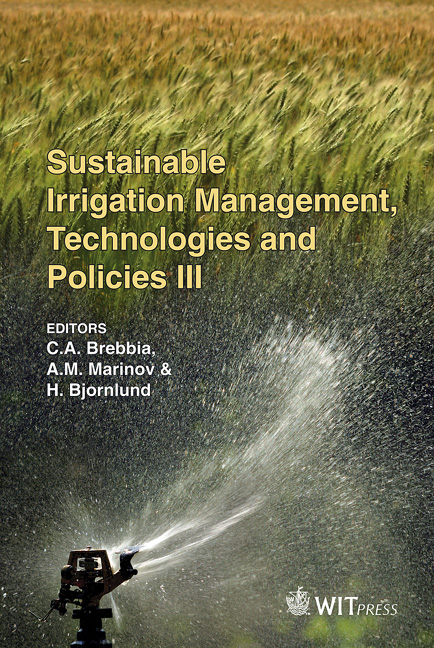Saving Irrigation Water By Accounting For Windbreaks
Price
Free (open access)
Transaction
Volume
134
Pages
11
Page Range
121 - 131
Published
2010
Size
399 kb
Paper DOI
10.2495/SI100111
Copyright
WIT Press
Author(s)
T. T. de Vries, T. A. Cochrane & A. Galtier
Abstract
Water for irrigation in the Canterbury region of New Zealand is becoming an increasingly precious commodity, as it is in many other areas of the world. Adequate use of this resource will define the economical and environmental future of the region. Current irrigation systems, even under best management practices, over-apply water, as they do not account for spatial variability of crop water needs in fields. Over-application of water is wasteful and has environmental and economical repercussions. Water requirements are determined by crop evapotranspiration (ET). Key factors affecting ET in Canterbury are wind and solar radiation. Both of these are significantly affected by windbreaks, resulting in variability in ET and water requirements across a field. Understanding the variability in ET caused by windbreaks will enable for the correct application of water through precision irrigation systems. A theoretical model was developed to estimate savings in irrigation by accounting for windbreaks in the Canterbury region. Windbreaks reduce evapotranspiration and therefore crops/pasture behind windbreaks needs less water than those in other parts of the field. Results for a case study in Canterbury show that windbreaks can potentially reduce the annual on-farm water consumption by 10 to 20%, while still maintaining ideal crop/pasture yields. In the short term, the application of precision irrigation systems in fields with windbreaks can have the farm level benefits of improved water use and reduced nitrogen/phosphorus leaching. In the long term this could translate directly into cost savings because of a potential decrease in energy used for irrigation (running pumps, etc.). Keywords: irrigation modelling, evapotranspiration, windbreaks, water saving.
Keywords
irrigation modelling, evapotranspiration, windbreaks, water saving





